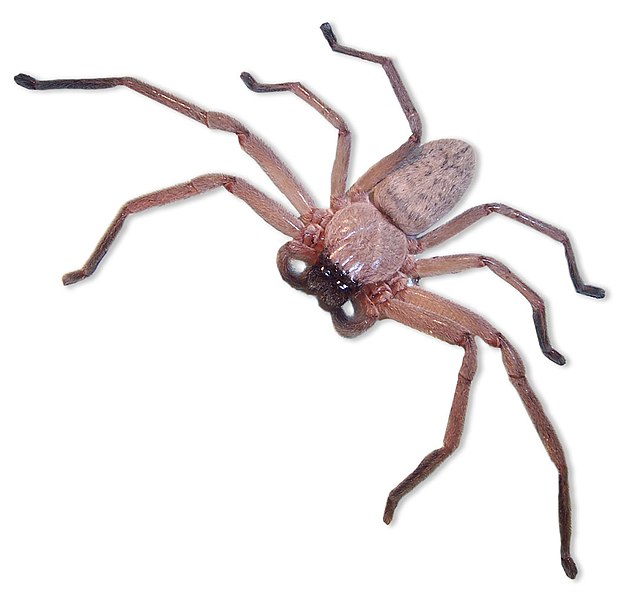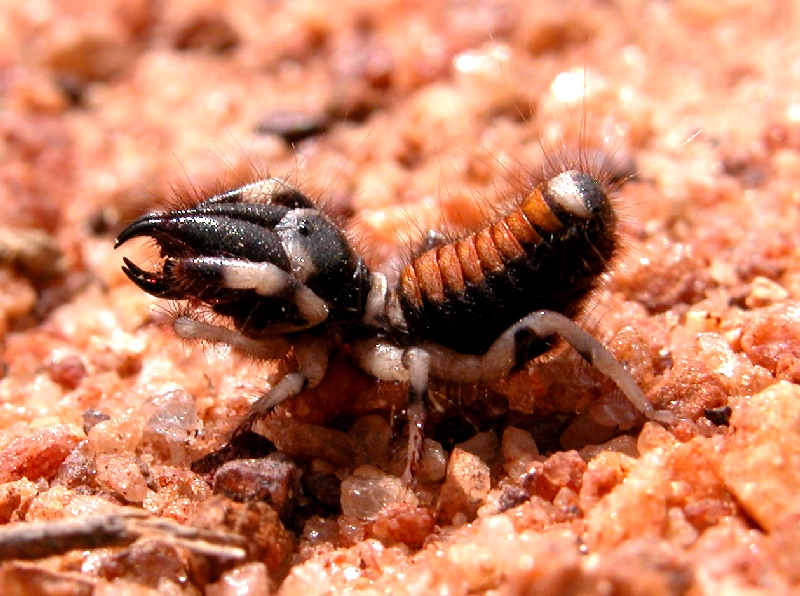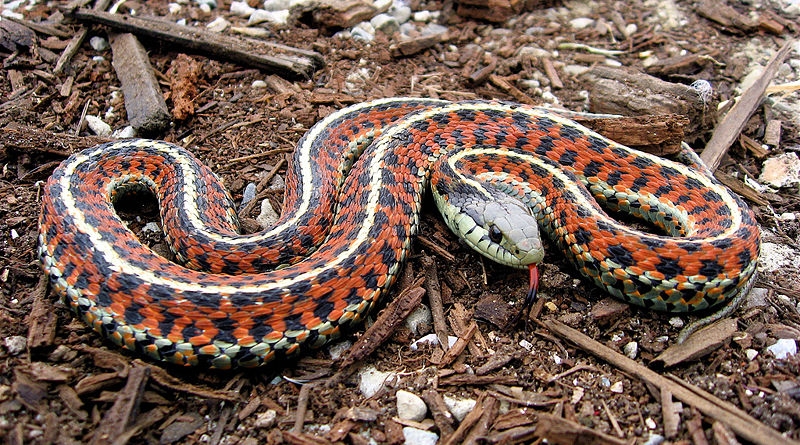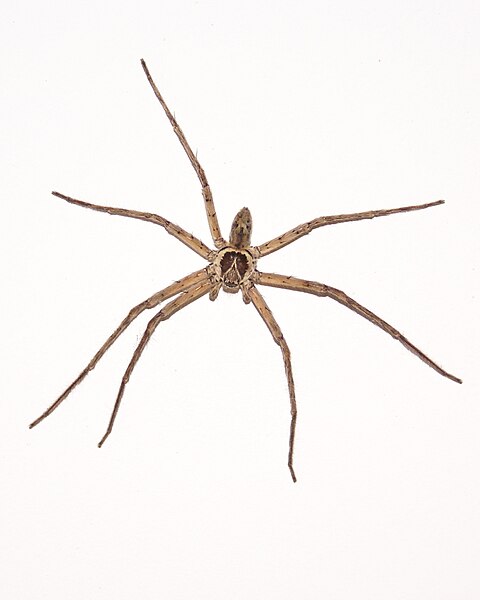 In Part I of this article I talked a bit about collecting (or trying to collect!) the Huntsman Spider, Heteropoda venatoria, in a most unlikely setting. Usually purchased as a “curiosity”, the Huntsman often surprises its new owners with a range of interesting behaviors – if you thought that spider pets were limited to tarantulas, please consider this fascinating alternative!
In Part I of this article I talked a bit about collecting (or trying to collect!) the Huntsman Spider, Heteropoda venatoria, in a most unlikely setting. Usually purchased as a “curiosity”, the Huntsman often surprises its new owners with a range of interesting behaviors – if you thought that spider pets were limited to tarantulas, please consider this fascinating alternative!
Caution: Although Huntsman Spiders are not considered to be dangerously venomous, they are fast and aggressive, and will not hesitate to bite. We know little about spider venom, and the possibility of an allergic reaction must be considered (central nervous system reactions have been reported on rare occasions)….please do not touch any spider with bare hands.
Natural History
The Huntsman Spider likely originated in southern India and Sri Lanka, but is now well-established in warm regions worldwide (including Florida). They frequently enter buildings, where they sometimes welcomed for their roach-catching abilities.
The alternate name, Giant Crab Spider, took hold because these spiders hold the first 2 pairs of legs spread-out like a crab on guard. Huntsman Spiders build no webs, but rather run down their prey, and are quite ravenous. I’ve observed youngsters being dragged about by roaches three times their size, and adults sometimes catch lizards and small bats.
Huntsman Spiders are entirely arboreal and adapted to living upon flat surfaces, such as walls and tree trunks, as opposed to branches.
Huntsman Terrariums
In captivity, they take readily to cork bark and will climb terrarium glass as well. Position cork bark slabs near the glass, so that the spiders will remain visible when using the reverse side of the bark as a shelter.
While arboreal tarantulas (i.e. Pink-toed Tarantulas, Avicularia spp.) do well in standard aquariums turned on end to provide additional height, I hesitate to recommend such for Huntsman Spiders – opening the screen cover leaves a wide area available for escape. I much prefer a “tall or high style” aquarium, with the cover is on top. Alternatively, a Faunarium turned on its end might work, as the access door is small and should limit escapes.
Heat and Humidity
Huntsman Spiders favor warm, humid habitats, and should be maintained at 77-85 F and provided daily misting and a moisture-retaining substrate.
Diet
Huntsmans take nearly any insect prey available, but particularly favor roaches. Wild caught moths, katydids, beetles and grasshoppers should also be provided whenever possible.
Breeding
Male Huntsman Spiders are smaller and thinner than females, and their carapace bears darker markings. When ready to breed, males cease feeding and develop noticeably swollen pedipalps (leg-like structures bearing sperm packets). They wander about in search of females to mate with (and, usually, to be consumed by!). I’ve had breeding males escape with their lives, but none have survived for long afterwards.
The female carries her uniquely flattened egg case below her body. The young stay on her for a short time, and then disperse. If you are raising this species, be sure to cover the terrarium’s screening with an extra layer of mosquito netting, lest the hatchlings escape – a colony established in the home is not to everyone’s liking!
Further Reading
Huntsman and other spiders produce a range of sounds. An interesting article on this topic, which includes photos of males in breeding condition, is posted here.
A video showing this species’ speed and hunting style is posted
Huntsman Spider image referenced from wikipedia and originally posted by Ed g2s and Saperaud
 That Reptile Blog – Reptile, Amphibian and Exotic Pet Care and Information
That Reptile Blog – Reptile, Amphibian and Exotic Pet Care and Information

 Windscorpions give pause to even die hard Arachnid fans – their formidable chelicerae (jaws) are disproportionately large, and they move with unbelievable speed. These odd Arachnids (Order Solifugae), which are neither scorpions nor spiders, are not easy to keep. However, if you are a serious Arachnid keeper looking for a new challenge, Windscorpions are definitely worth a closer look.
Windscorpions give pause to even die hard Arachnid fans – their formidable chelicerae (jaws) are disproportionately large, and they move with unbelievable speed. These odd Arachnids (Order Solifugae), which are neither scorpions nor spiders, are not easy to keep. However, if you are a serious Arachnid keeper looking for a new challenge, Windscorpions are definitely worth a closer look. Windscorpions must be kept dry, and they need a great deal of room – more than twice that of similarly-sized scorpions and spiders. A secure, undisturbed environment, stocked with
Windscorpions must be kept dry, and they need a great deal of room – more than twice that of similarly-sized scorpions and spiders. A secure, undisturbed environment, stocked with  This species adds a few twists to typical garter snake husbandry – it readily consumes mice and other snakes (including its young), and unreceptive females have been reported to kill over-enthusiastic males.
This species adds a few twists to typical garter snake husbandry – it readily consumes mice and other snakes (including its young), and unreceptive females have been reported to kill over-enthusiastic males. It was to be over 15 years before I next crossed paths with the Huntsman Spider – this time in a Bronx Zoo building (JungleWorld) in which I worked as an animal keeper. A huge population, having arrived with tropical plants, was established, and I was ecstatic (my mammal-keeping co-workers were far less impressed!).
It was to be over 15 years before I next crossed paths with the Huntsman Spider – this time in a Bronx Zoo building (JungleWorld) in which I worked as an animal keeper. A huge population, having arrived with tropical plants, was established, and I was ecstatic (my mammal-keeping co-workers were far less impressed!).